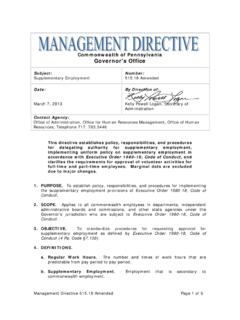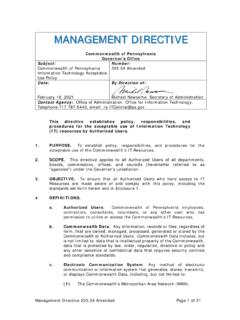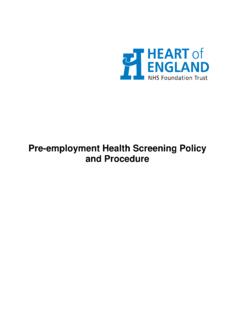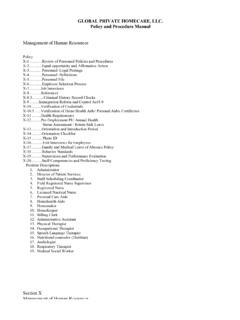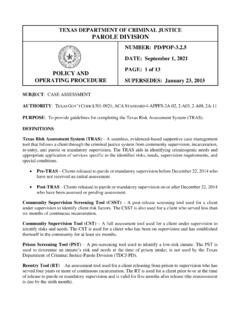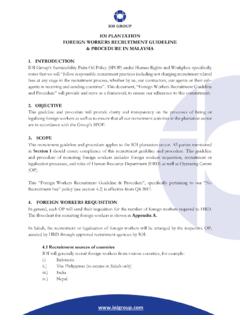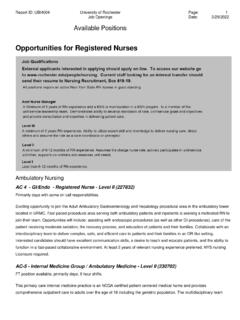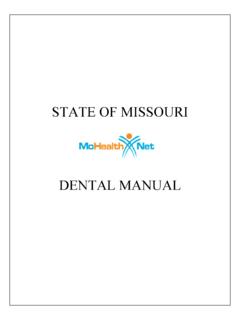Transcription of Continuing Operations Guide for employees
1 Office of Administration COMMONWEALTH OF PENNSYLVANIA UPDATED: MARCH 3, 2022 Continuing Operations Guide FOR employees Revised March 3, 2022 1 Contents Introduction .. 1 Staying Safe at Work Personal Safety .. 2 Wearing a 2 Gloves .. 2 Physical Distancing .. 2 Worksite Safety .. 3 Worksite employee screening Guidance .. 3 Worksite Exposure 4 Travel Guidance .. 6 Frequently Asked Questions .. 7 Resources .. 7 Returning to Work Website .. 7 State employee Assistance Program (SEAP) .. 7 Introduction On March 6, 2020, pursuant to Section 7301(c) of Pennsylvania s Emergency Management Services Code, 35 7301(c), Governor Wolf issued a Proclamation of Disaster Emergency ( Proclamation ) related to the novel coronavirus disease (COVID-19) outbreak. On March 13, 2020, President Trump declared a national emergency in response to the COVID-19 outbreak.
2 The following guidance will be in place to support best public health practices to avoid negative impacts and adapt to the changing nature of the pandemic. This guidance will be in place for approved activities until further notice. It is important to follow these basic tenets: Safety First: Follow all guidance from the Centers for Disease Control and Prevention (CDC) and Department of health (DOH). Personal Responsibility: We are all in this together, and everyone plays a role by following the CDC and DOH guidelines for handwashing and staying home if you are sick. employees of the LCB, Attorney General, PGCB, Auditor General and all other agencies not under the Governor's jurisdiction should contact their local HR office for assistance. Revised March 3, 2022 2 Please note the following guidance may differ for 24/7 Operations including correctional facilities, state hospitals and centers, veterans homes, and youth development centers, as well as those agencies following CISA s guidance for critical infrastructure workers.
3 employees within such Operations should continue to follow the guidance issued by their agency. In cases where a provision of an approved labor agreement or side letter cannot be reconciled with this policy, the labor agreement or side letter will control. Staying Safe at Work Personal Safety We all must do our part to protect our personal health and safety, as well as the health and safety of others, both at work and outside of work. Wearing a Mask Effective Monday, February 28, 2022, all employees and contracted staff working in agencies under the Governor s jurisdiction are encouraged, but not required, to wear a mask indoors. Visitors to commonwealth work locations are also encouraged to voluntarily wear a mask. employees and contractors who are covered by federal guidelines should continue to follow all applicable directives from the federal government.
4 Masks will be available at work locations, or you can wear your own, provided it meets CDC guidelines. Gloves Gloves will only be provided to employees who require them to perform certain job functions, such as handling mail, custodial work, certain trades, and groundskeeping. employees who use cleaning chemicals are required to use disposable gloves. Other personal protective equipment may also be required by the chemical manufacturer. Check chemical warning labels and safety data sheets for appropriate personal protective equipment. Physical Distancing As of May 31, 2021 physical distancing is no longer required at commonwealth worksites. Revised March 3, 2022 3 Noncompliance with Personal Safety Guidelines employees who do not comply with the personal safety guidelines outlined herein will be subject to corrective action up to and including removal from employment.
5 Worksite Safety Worksite employee screening Guidance Post Vaccination health screening The three days post-COVID-19 vaccination, employees may experience COVID-19 symptoms. These symptoms include pain and swelling in the arm where you got the shot, fever, chills, tiredness, muscle pain, nausea, and headache. Apart from a fever, employees should be permitted to work with these symptoms for up to three days post vaccination (date of the vaccine is the day 1). If an employee experiences a fever, they should be excluded from the workplace. If an employee is unable to work through the side effects of the vaccine, they may be eligible for Emergency Paid Sick Leave (ES) or use your own paid or unpaid leave. health Care Personnel screening Post COVID-19 Vaccination health care personnel may experience symptoms in the three days after vaccination.
6 screening procedures for these personnel should follow procedures outlined in HAN-541. Self- screening Individuals reporting to a worksite should conduct daily self- screening or use the CDC Self-Checker tool, these questions should be answered by individuals prior to reporting to the worksite. 1. Are you showing any signs or one or more of the following symptoms - Temperature of F or higher, cough, shortness of breath, chills, sore throat, headache, fatigue, congestion or runny nose, nausea or vomiting, diarrhea, repeated shaking with chills, muscle pain, new loss of taste or smell or difficulty breathing that are not related to a pre-existing medical condition? (Individuals experiencing post-vaccination side effects including chills, tiredness, muscle pain, nausea, and headache in the three days after a COVID-19 vaccination do not need to be excluded from the workplace.)
7 2. Are you awaiting testing results or other diagnostic procedure to determine COVID-19 for any reason other than an impending medical procedure or employer testing? An employee instructed to quarantine Revised March 3, 2022 4 by a health care provider prior to an impending medical procedure will not be permitted in the workplace. If you responded YES to any questions: Do not report to the worksite. Report off work to your supervisor. Stay home and contact FMLA Services at 717-346-4667 to discuss leave options available to you. Worksite Exposure Protocol With the reopening of commonwealth Operations comes the possibility of employees entering the worksite with having had exposure to COVID-19. employees are encouraged to stay home if they are ill. Please note the following guidance may differ for 24/7 Operations including correctional facilities, state hospitals and centers, veterans homes, and youth development centers, as well as those agencies following CISA s guidance for critical infrastructure workers.
8 employees within such Operations should continue to follow the guidance issued by their agency. An employee who exhibits symptoms ( , fever, cough, shortness of breath, sore throat, headache, repeated shaking with chills, muscle pain, new loss of taste or smell or difficulty breathing) at the worksite will be sent home and advised to seek medical assistance immediately. (If an employee does not have a healthcare provider, they will be referred to their local health department or 1-877-PA- health .) Definitions Close Contact - an individual who a positive case individual may have been within 6 feet for a consecutive total of 15 minutes or more, or the positive case had direct physical contact (hug or kiss), shared eating or drinking utensils, or spread respiratory droplets directly on them or was exhibiting symptoms (through sneezing or coughing) in the 48 hours prior to symptom onset or positive test administered.
9 See PA-HAN 533. Individual under Investigation an individual who is awaiting testing results or other diagnostic procedure to determine COVID-19 status. Individuals under investigation should isolate away from the workplace until results are received unless the testing is conducted because of an impending medical procedure. Positive Case - an individual with or without symptoms who tests positive for COVID-19 RNA using a viral test. Probable Case an individual diagnosed with COVID-19 by health care provider or Department of health personnel because they meet clinical criteria AND have had exposure to the COVID-19 virus but have not had a confirmatory test OR Revised March 3, 2022 5 Tests positive for COVID-19 with a respiratory sample using an antigen test. Teleworking individual: If a teleworking employee calls off with a COVID-19 positive diagnosis, no additional actions are necessary.
10 In the event a teleworker is unable to telework because of COVID-19 symptoms, they may qualify for ES leave. Contact FMLA Services for additional information. Onsite or fieldwork individual: If it is determined an individual that has been in the worksite is a positive COVID-19 case, the following steps should be taken: Individual Reports as a Positive Case 1. If the individual is still in the workplace and is a positive case, send them home under the condition they are not fit for duty. If the individual is exhibiting symptoms of COVID-19 and still in the workplace, they should be evaluated using fitness for duty procedures and sent home if necessary. Individuals should be advised to contact a health care professional or public health organization for isolation guidance. At the supervisor s discretion, individuals may be allowed to drive themselves home.







